How Long Does It Take To Climb Mount Everest?
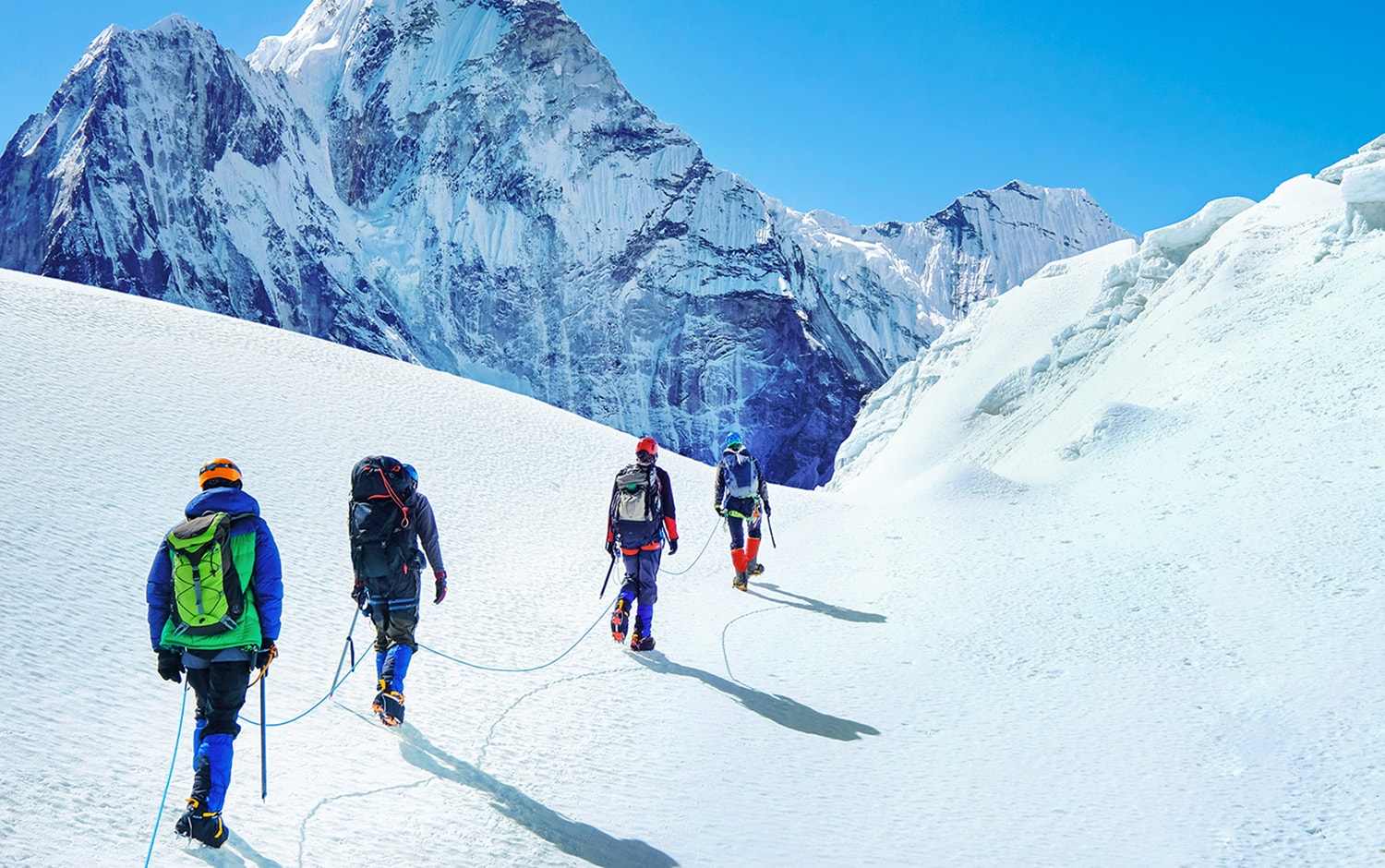
Published on: 11/21/2022
Our planet’s highest mountain, Mount Everest, lies at 8,848 meters above sea level. Since it was first recognized as the earth’s highest peak by Sir George Everest in 1841, it has captured climbers’ imaginations.
Everest sits in the Mahalangur mountain range on the border of China and Nepal. Its once-mysterious summit lies on the Nepal side, with Tibet to the south and China to the north. Chomolungma, as the mountain it is called in Tibetan, is an important religious site for the native people. Many Sherpas believe the summit is home to the Buddhist goddess, Miyolangsangma.
Humanity’s first attempts at climbing Mount Everest couldn’t begin until 1921, when Tibet opened its borders to foreigners. At this time, Nepal was still closed to outsiders, and no approach could be made from that side. All this has dramatically changed in modern times. In the current age of private expedition companies and bottled beer at base camp, it’s easy to forget that it’s less than a century since Tenzig Norgay and Sir Edmund Hillary were the first to successfully climb Mount Everest.
How long does it take to climb Mount Everest? Well, it took humanity quite a while…
Firsts Ascent and Notable Attempts
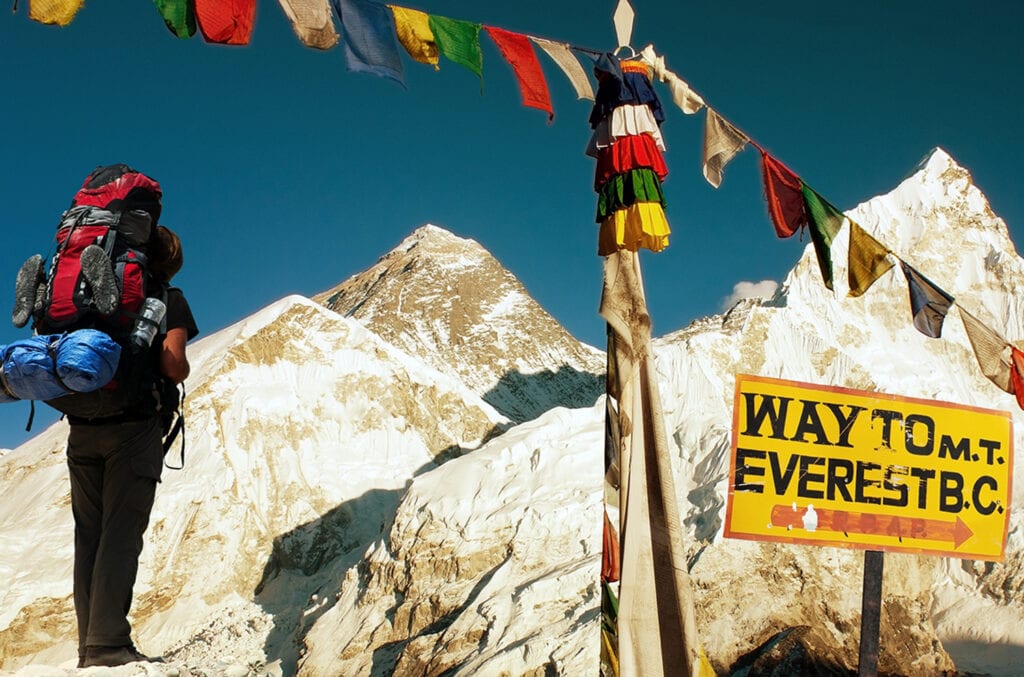
The 1920s
Attempts to climb Mount Everest were made in 1921, 1922, and 1924. On this last expedition, two British climbers, George Mallory and Andrew Irvine, were seen by another team member within 800m of the summit. The men were then overtaken by bad weather and ultimately perished. Though Mallory’s body was recovered in 1999, it’s unclear whether either man summited before passing away. Most experts believe they never reached the top. But it has made for decades of fascinating speculation…
The 1930s
Yearly expeditions to Everest started in 1933, featuring climbers from various countries, including Britain, Canada, the USA, India, and Switzerland. The expedition in 1935 is notable for its inclusion of Tenzig Norgay. Norgay worked as a porter. But this wouldn’t be his last time on Everest. This was also the year Eric Shipton realized the Western Cwm could be climbed if they could access the Nepalese side. This speculative route was later used on the first successful ascent of Mount Everest in 1953.
The 1950s and the Opening of Nepal
In 1950, the Chinese government closed Tibet to foreign visitors while Nepal opened its borders for the first time. All previous attempts to climb Mt Everest had come via the North face. With the opening of Nepal, new, potential routes emerged. In 1950, Bill Tilman, Charles Houston, Oscar Houston, and Betsy Cowles made an exploratory expedition to Everest through Nepal. They established the route that is still (roughly) the standard approach to the mountain today.
1951

In 1951, Shipton made another attempt at climbing Everest in a group that included Hillary. At 6100m, both men saw all of the Western Cwm, concluding that an ascent was possible by climbing the west face of Lhotse and then traversing to the South Col. The expedition spent a month trying to access the Western Cwn through the Khumbu glacier but were stopped in their tracks by a 100-300 foot crevasse. The Khumbu icefall had defeated another expedition.
1952
In 1952, a Swiss Everest expedition (including Tenzig Norgay) was led by Edouard Wyss-Dunant. They climbed the South Col and southeast ridge, finding a way past the Khumbu icefall that stopped the 1951 team with a precarious rope bridge. They were the first climbers to stand in the Western Cwm. Norgay and Swiss climber Raymond Lambert made their final summit push on May 28th. In uncertain weather, the men would turn back only 150 meters from the top.
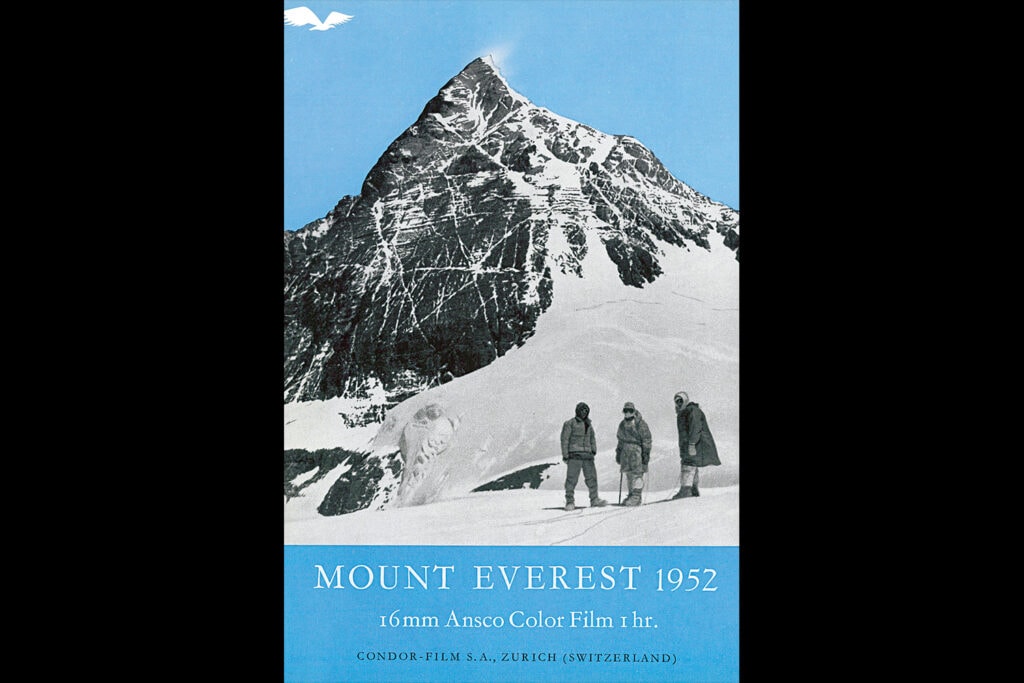
1953 – Norgay and Hillary climb Everest
In 1953, Britain’s ninth Everest expedition led by John Hunt returned to Nepal. Hunt’s plan was to prepare three teams of two climbers to attempt the summit over the course of several days. This would give them more options and more opportunities to get a clear window of weather for at least one team.
Using supplemental oxygen, Tom Bourdillon and Charles Evans made the first ascent of the south summit. They had come within 100 meters of the final summit but had to turn back due to problems with their oxygen bottles. Two days later, in the early morning, the expedition’s strongest and most determined pair, Norgay and Hillary, would make their summit attempt, also using supplemental oxygen.

At 11.30 am on May 29th, Norgay and Hillary summited Everest by the South Col route (1). They were the first to scale the 12-meter vertical rock face that would later become known as the Hillary Step. The men spent ten minutes at the summit, taking photos and burying keepsakes. Hillary would later say that he became light-headed after only a few minutes without using oxygen tanks in the death zone. A few days later, Hunt and Hillary returned to Kathmandu to learn they had been knighted for their Everest climb.
First Woman to Summit
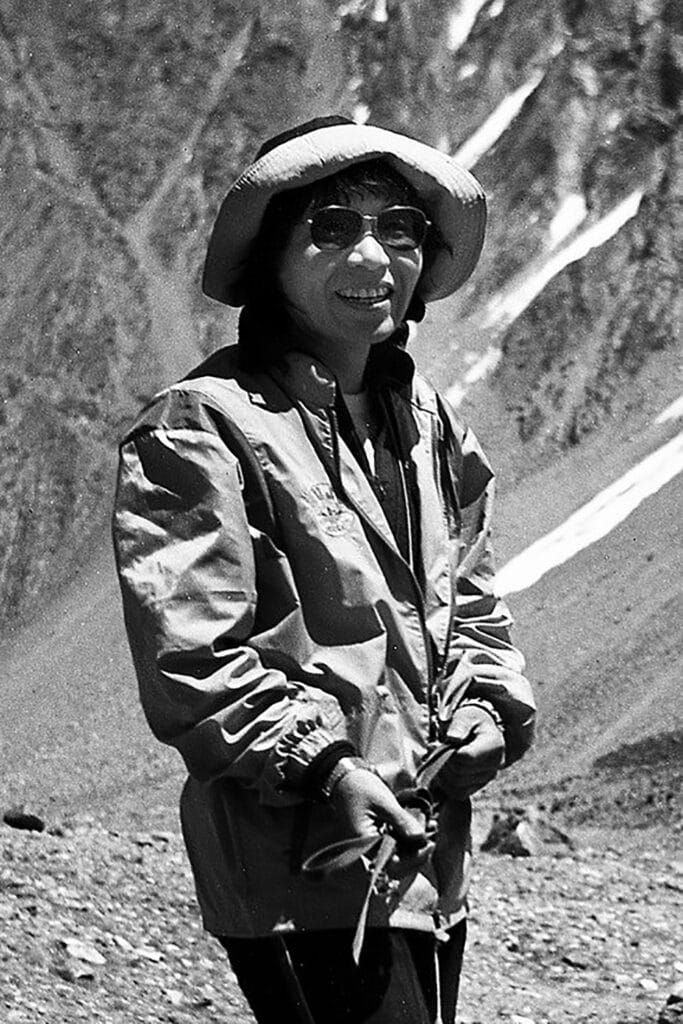
Japanese climber, Junko Tabei, became the first woman to climb Everest on May 16th, 1975. She was among the seven Japanese climbers who’d been injured in an avalanche at camp two on May 4th.
Current Popularity
Since the first ascent in 1953, climbing Everest has become more popular and more accessible by the year. Until Covid. Both Nepal and China effectively closed the mountain in 2020. The only exception to this was a small group of Chinese nationals allowed to climb Mount Everest from that side. In 2021, China maintained its closed-door policy while Nepal issued a record number of visas.
This is understandable. The Nepalese economy heavily depends on mountaineering tourism – and Mount Everest is their cash cow. But according to some, the eagerness of the Ministry of Tourism to issue visas is a symptom of a broader issue. Climbing Everest demands technical climbing in extreme conditions. Some climbers attempt to summit every year who really shouldn’t. Unfortunately, money talks. And tour operators and their Sherpa guides are not usually in a position to turn down paying clients – even those who are not physically prepared for the journey.
Monetary and Human Costs

Until the 1990s, only the privately wealthy or very well-funded could hope to climb Mount Everest. Commercial companies began to spring up around this time. For the first time, amateurs could access the mountain, and numbers at Everest base camp drastically increased. Overcrowding and the relative inexperience of many climbers paying for the experience resulted in safety concerns, accidents, and deaths. Some paying clients arrive having never used ice axes or worn crampons before. The most famous incident probably remains the blizzard in 1996 when eight people died. This formed the basis for Jon Krakauer’s book, Into Thin Air.
Following the data provided by the Himalayan Database (2), safety on Mount Everest appears to be improving. There’s a steady decrease in the number of deaths and accidents relative to the number of Everest climbers. The same data shows that the mountain’s popularity is increasing alongside an increase in the cost of getting there. According to this database, since 1953: 6,098 people have summited Everest a total of 11,346 times. Approximately 50% of these people have been high-altitude workers (or porters), and 50% have been foreign adventurers. There have been 305 deaths in those attempts. 61% of these deaths have occurred to outsiders compared to 39% of high-altitude workers. Approximately 800 people attempt to climb Mount Everest every year.
Difficulty and Danger
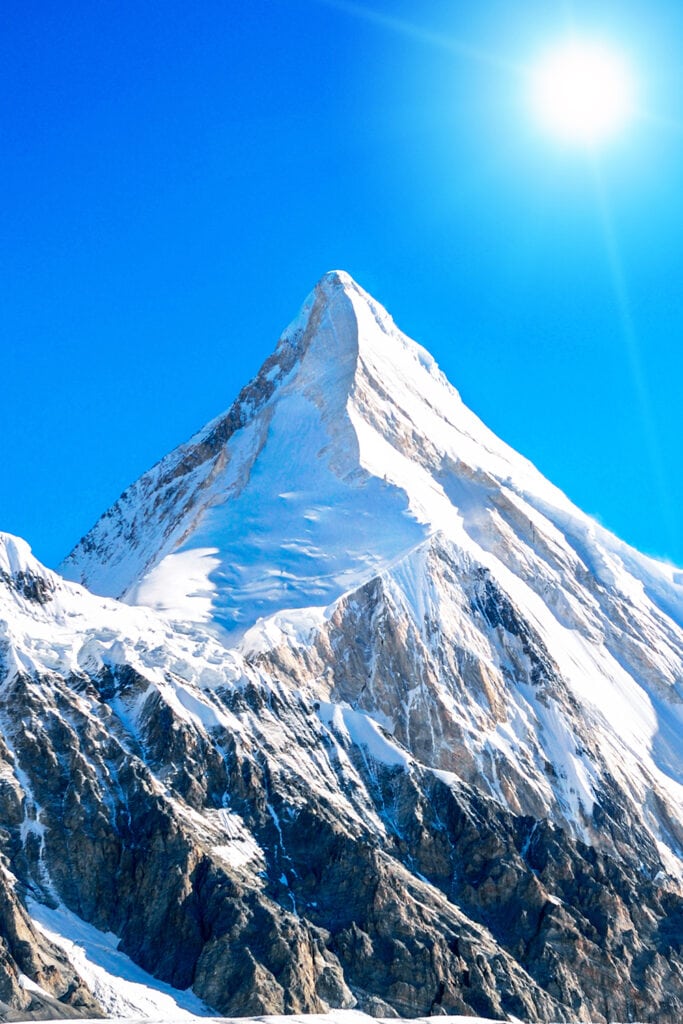
Climbing season begins in April at Mount Everest. Over 80% of all summit attempts are undertaken between May 15th – May 27th. The weather on top of the world’s highest mountain does not take any prisoners. However, the peak has been summited year-round, and October produces a similar opportunity with its weather. April and May simply offer the most likely windows of clear weather. But on the world’s tallest mountain, bad weather is a constant threat. There’s no specific climbing season. Though most climbers agree that ‘summit season’ appears to be in May.
Dealing with mountain sickness
The extreme altitude is another factor to consider. Although the death zone above 8000m/26,200 ft is the chief concern, many climbers will begin to experience altitude sickness long before they reach such heights. As you reach the higher camps, the body releases the hormone EPO as a reaction to the reduced oxygen in the air. This causes the body to produce more red blood cells, which can carry more oxygen to the muscles. The problem is this process also thickens the blood, putting more stress on the heart and causing the symptoms of altitude sickness.
Mountain sickness can be avoided using careful, slow exposure. For this reason, guides will usually take their clients on a number of trips up the mountain and back to Everest base camp before trying to summit Everest safely. With each trip, they will climb higher, acclimatizing the climbers to the altitude gradually. This also allows for the stocking of higher-altitude camps.

Roland Hunter FRGS, managing director of the Mountain Company, who summited Everest himself, recommends a longer period of true acclimatization at altitude where possible:
“These days many climbers will pre-acclimatize at home such as sleeping in low-oxygen tents. However, we think it is better to spend longer on the mountain and take time to properly acclimatize to the high altitude.”
On the Nepalese side, one of the most dangerous and challenging parts of the climb is from camp 4 to the summit. For experienced climbers, the going isn’t particularly tough until after camp 3. Statistically, the most dangerous part of the trip is the descent from the summit to camp 4. Most deaths and serious accidents on Everest occur at this stage. By this point. climbers are exhausted and oxygen deprived. Impaired judgment or lapsed concentration in this situation can cost you your life.
The inherent risk of mountaineering
High-level mountaineering presents another risk. Most athletes train for months to get their bodies in prime condition for a single event lasting several hours. In climbing terms – summit day is the big event. But the reality of climbing Everest is that you are far from your physical prime by the time you reach the higher camps. Most climbers will have lost muscle mass by the time they reach these heights. The effort of climbing and maintaining core temperature demands a lot of calories – often more than a person can keep up with. The human body reduces its digestive capacity to focus energy on the cardiopulmonary system at higher altitudes. This makes it hard to maintain strength and condition.
Routes
There are about 20 routes up Mount Everest that have been identified and attempted. But for the overwhelming majority of climbers, it comes down to a choice between the Northeast Ridge route and the South Col. For all intents and purposes, these are the only two routes that are commercially serviced.
The Northeast Ridge Route
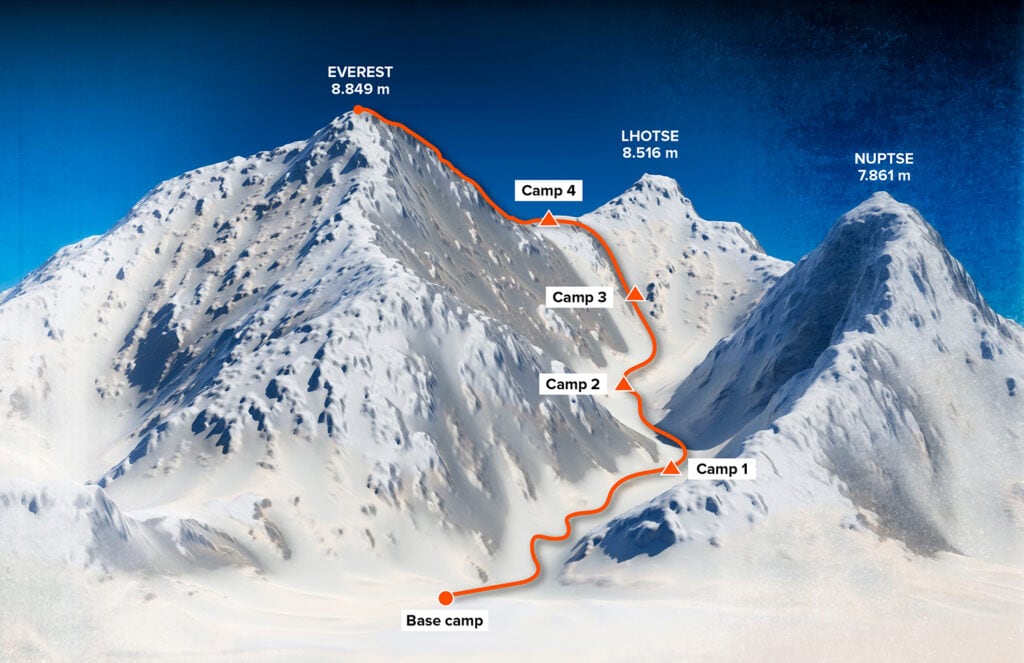
This north ridge route approaches from the Tibet side. It is statistically and anecdotally the safer of the two routes, with fewer objective hazards than the southern approach. Some climbers say it’s the less aesthetically beautiful of the two routes. The trip starts in Lhasa. From there, you are driven across the Tibetan Plateau to the northern Everest base camp. This is a three-day journey but does allow for the carrying of many heavy items and supplies to the Everest camp – without using porters, chartering flights, or using yaks.
The camps
On this route, an advanced base camp is used at 6,492m. This is quite high relative to the Everest base camp used on the Nepalese side of the mountain. This can be useful for acclimatization. Thankfully, the slope between the lower Everest base camp and the advanced base camp is quite gentle. This allows the higher camp to be stocked with a kitchen, lounge, dining tent, and other comforts.

Above this point, the fixed lines and hard climbing begin. The next camp is established at 7,000 meters. After that, camp 2 is established at 7,800 meters. Camp 3, the final camp on this route, is set up at 8,300 meters. Up this high, the tents are battered with high winds, and climbers are using supplemental oxygen. Here, it’s difficult to pile enough rocks on the steep slope to create a platform for tents. It’s common to see yellow tents here with only a partial platform underneath them. Here, these tents are often bunched together and weighed down with heavy rocks and nets.
Leaving camp 3, climbers enter the yellow band for the first time. They clip into a fixed rope that leads them through a deep gully and up a ridge to the northeast ridge. This route climbs up the first step, a challenging route requiring careful footwork – especially considering its high altitudes. The next landmark is Mushroom Rock, where climbers often swap oxygen. The area is covered with loose rock, making footing uncertain – even in crampons.
Reaching the top
On the second step, climbers can use the fixed Chinese ladder to climb the 30-foot vertical face. Obviously, this only facilitates one climber at a time and can result in significant tailbacks. Waiting around for other climbers increases the risk of frostbite and acute mountain sickness. The third step is a gentler gradient with better footing. But altitude and exhaustion make it more challenging than it would otherwise be.
The Summit Pyramid is a steep snowy slope exposed to the elements. At its peak, climbers round an outcropping of rock before climbing three small steps. Then a short ramp leads up to the final ridge climb to the summit. The downclimb takes the same route. Like on the southern route, climbing down is every bit as dangerous as ascending, with the death zone presenting a particular challenge.
South Col

Climbing from the Nepalese side involves flying into Kathmandu and then taking a plane to the small airport in Lukla. The next step is to trek to Everest’s base camp, situated on a moving glacier. Both the route to the camp and the location of the base camp are beautiful. The campsite is surrounded by Pumori mountain and the Khumbu Icefall.
Reaching camp 1 on this route requires crossing the icefall. Dangers presented here include crevasses, seracs, and avalanches. Getting to camp 2 means crossing the Western Cwm. Here, climbers are at serious risk from crevasses, but the chief danger is that of avalanches from the West Shoulder. The next step is to climb the Lhotse face to camp 3. This is a challenge for most climbers. Typically, a climber will already be feeling the effects of altitude sickness by this point. Supplemental oxygen, however, must be reserved for later in the ascent. This is a long climb with a gradient ranging from 20-45 degrees.
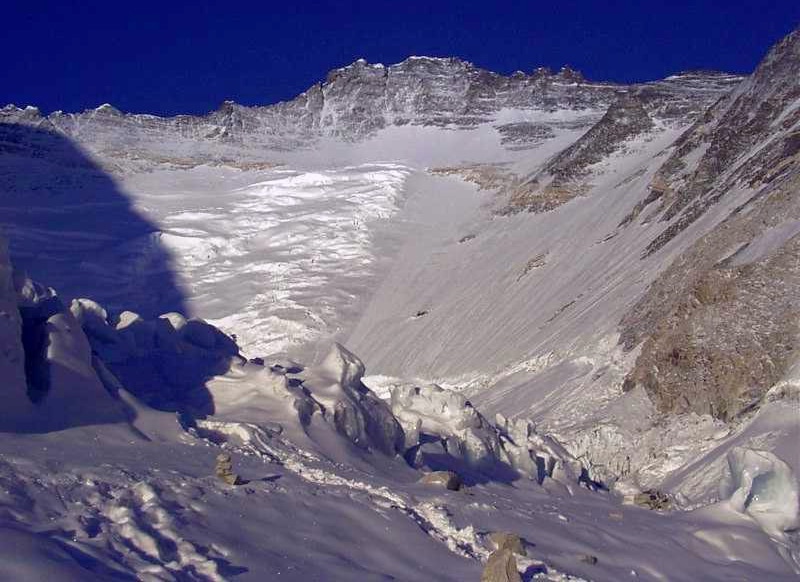
From camp 3 to the South Col
Getting to the South Col begins at camp 3 and takes climbers across the yellow band. By this point, climbers will be using oxygen and wearing their warmest equipment. This limestone section wouldn’t make for hard climbing in normal conditions. The altitude here can make it challenging. Bottlenecks are common on this part of the mountain. Frostbite from standing around is a real problem.
The next stop is the South Col. This flat space covered with loose rock is surrounded by Everest to the north and Lhotse to the south. Hurricane-force winds are an issue here. This is usually the highest point Sherpas will carry oxygen and equipment for the summit attempt. For this reason, it acts as a staging area for attempts to summit Everest.

Balcony
The next stage is the balcony. Here, climbers are truly on Everest, and a fixed rope guides the long (often sluggish) line of people upward. The pace is slow as those ahead stop to eat, drink, and make decisions on whether to continue on or turn back. The ascent from the balcony to the south summit is steep and technical, with exposed rock faces in years with little snowfall.
Hillary Step
The next section is the Hillary Step. This is a challenging, vertical section with fixed ropes – usually one for going up and one for going down. Nonetheless, this is still a bottleneck area on crowded days. The 2015 earthquake is also said to have changed the step significantly, with some rock climbers now referring to it as “the Hillary slope.” Above this section is a final snow-covered slope to the true summit. The extraordinary views and adrenaline are enough to fuel climbers through this final section.
A treacherous descent
Though the reason people climb Mount Everest has been fulfilled, the descent to the South Col is statistically the most dangerous section. Climbers must carefully monitor their oxygen use to ensure it lasts until their destination. Descending via the Chinese ladder poses a problem when a climber’s feet are outside their field of vision. The effects of altitude sickness compound the technical climbing challenges. Bottled oxygen must be carefully monitored.

So, How Long Does It Take To Climb Mount Everest?
As you have seen, summiting Everest depends on many factors, especially each person’s rate of acclimatization and weather conditions. However, according to Roland Hunter, who organizes commercial expeditions with his guiding business, the Mountain Company, you can expect around 6 weeks from arrival to Nepal.
Of course, that’s for a commercially guided climb. The pros can go much faster. For example, Nimsdai (Nismal Purja), from the star documentary 14 Peaks, summited Everest in 5 days from Base Camp with its elite team of climbers in May 2022. It took them 9 hours to reach the summit from Left South Col (3). They didn’t use supplemental oxygen.
However, Kilian Jornet summited Everest even faster a few years before that (4). He did so from the North Face in a mere 26 hours from Base Camp without using supplemental oxygen or fixed ropes, making one of the world’s fastest ascents (if not the fastest).
Should you Climb Everest?
We’ve deliberately shied away from the morality of climbing Mt Everest so far for a reason. Rock climbing attracts an ecologically concerned audience. The reason most of us climb mountains is to get away from civilization and experience pristine nature. When we start climbing, it’s hard to imagine our passion having a negative impact on the places we love. But many who have climbed the world’s tallest point report a growing problem with garbage, human waste, used oxygen canisters, etc. Big mountain climbing isn’t exclusive to Everest or even the Himalayas. There might be better choices out there.
References
1953 British Mount Everest expedition
Wikipedia (retrieved on 11/29/2022)
https://en.wikipedia.org/wiki/1953_British_Mount_Everest_expedition
The Himalayan Database by Elizabeth Hawley (retrieved on 11/29/2022)
https://www.himalayandatabase.com/
Nimsdai sets two new world records without oxygen – all while guiding and leading expeds.
Press release on Nimsdai’s official website (retrieved on 11/29/2022)
https://www.nimsdai.com/post/nimsdai-sets-two-new-world-records-without-oxygen
Kilian Jornet Summits Everest in Fastest Known Time
Jay Bouchard, May 22, 2017. Outside (retrieved on 11/29/2022)
https://www.outsideonline.com/outdoor-adventure/climbing/kilian-jornet-summits-everest-fastest-known-time/
